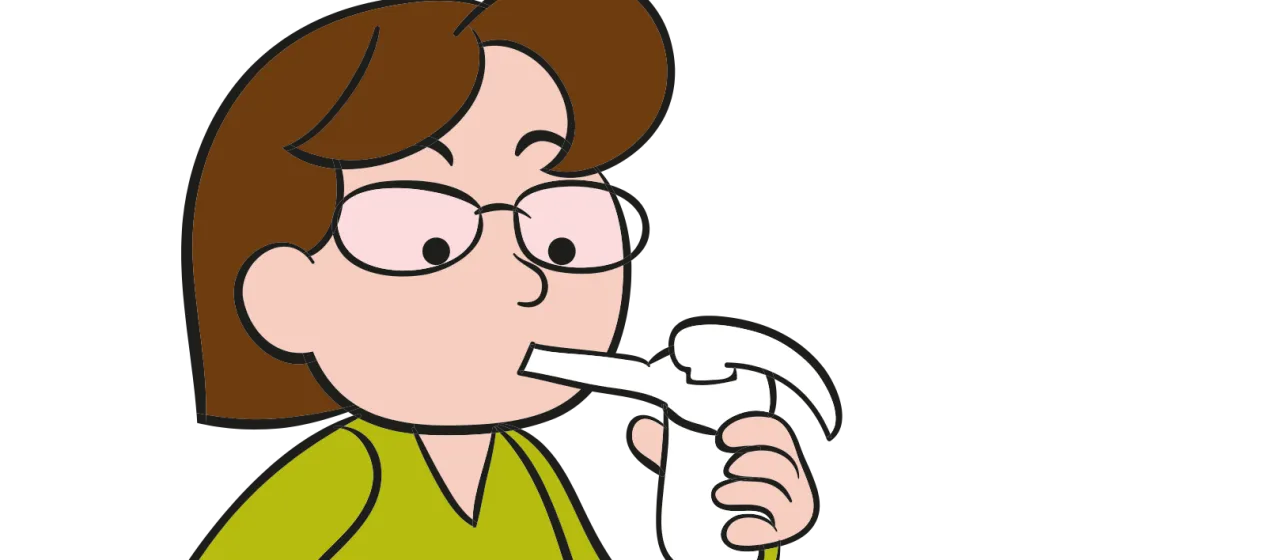OXIGEN salud
Aerosol therapy

OXIGEN salud
Aerosol therapy
Home aerosol therapy consists of administering medication by inhalation through a mouthpiece or mask, so that it enters the respiratory system directly. This is possible thanks to a nebuliser, which transforms the liquid solution into an aerosol.
This nebulising method releases therapeutic doses of a drug in the form of breathable particles over a short period (usually between 5 and 10 minutes). Nebulisers create a mist of liquid particles in a gas, which the patient breathes in. As the action is local, lower doses of the medication are administered. This way, the drug acts more quickly, reducing its side effects.
Nebulisers must be used correctly. Otherwise, they can cause problems and fail to serve the purpose for which they were prescribed. They may not be effective if the right technique is not used or if they are not cleaned properly.
Aerosol therapy is a treatment indicated for patients with certain respiratory diseases: COPD, asthma, pulmonary fibrosis, cystic fibrosis, respiratory tract infections, etc.
Aerosol therapy is suitable for both adults and children and offers several benefits:
The doctor will choose the type of nebuliser according to the location of the respiratory illness, the medication to be administered, the duration of the therapy, and the frequency and duration of each aerosol therapy session.
This type of nebuliser is based on the Venturi effect. As a propellant, it uses compressed air from a compressor with a flow rate of less than 8 litres per minute. The gas that nebulises the solution in which the medication is dissolved is generated by an electric compressor.
The device is made up of a cup or chamber that holds the liquid to be nebulised, an air inlet and tubing, through which the liquid passes once it has been nebulised.
When the drug solution stored in the cup collides with the jet of air, which flows at a high speed, it breaks up into small droplets that can enter the respiratory tract.
This nebuliser has a flow rate of over 6–8 litres per minute. It is used to nebulise antibiotics that, due to their special characteristics, cannot be administered through other types of equipment.
With this nebuliser, the particles are generated through a piezoelectric crystal transducer, which produces high-frequency vibrations that break up the drug solution. It provides 100 % humidity, and 90 % of the particles reach the lower respiratory tract.
It is indicated for diseases of the small airways, as the diameter of the nebulised particles it generates is very small. It can be used to nebulise solutions with bronchodilators or saline.
In this nebuliser, the aerosol is produced through vibrating mesh technology in the medicine chamber. It can be powered by battery.
Aerosol therapy or inhalation therapy is used in the treatment of diseases such as:
To ensure maximum treatment effectiveness, it is essential:
Yes, aerosol therapy is suitable for patients of all ages. It adapts to the specific needs of each group. It offers devices and techniques suitable for children and older adults.
Yes, in fact, continuing your treatment can help manage your symptoms. However, consult your doctor for specific recommendations.
It's essential to follow the instructions provided by your OXIGEN Salud technician at the facility. If you have any questions, please request another demonstration from the OXIGEN Salud team.
Yes, keeping your inhaler or nebulizer clean is essential for its effectiveness and longevity. Follow the manufacturer's instructions for proper cleaning and maintenance.
Sharing aerosol therapy devices is not recommended. Personal use prevents the transmission of infections and ensures that each patient receives the correct dose.
Yes, it's important to continue treatment as prescribed, even if symptoms improve, to maintain disease control and prevent relapse.
Improving respiratory function can contribute to better rest. If you experience insomnia or other sleep problems, tell your doctor.
Always inform your doctor about all the treatments and medications you are receiving to avoid interactions and ensure a safe and effective treatment plan.
Extreme weather conditions can trigger respiratory symptoms. Adjusting your treatment during these periods may be necessary under the supervision of your doctor.
Shall we call you?